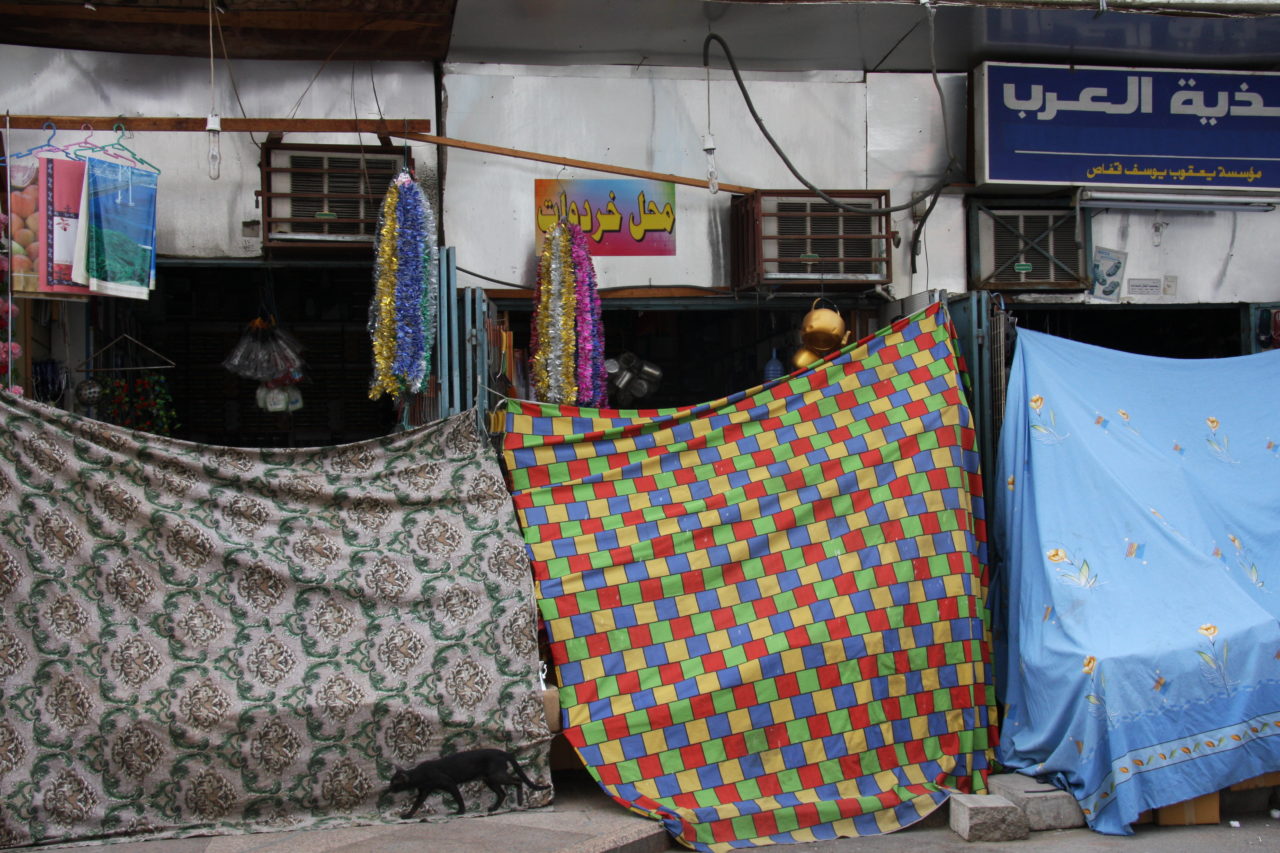
SUE BRATTLE
Ruins Come Back to Life With UNESCO's Help
Al-Balad old town, Jeddah
NOW and then when you’re travelling you come across something so authentic that it takes your breath away. It may be an untouched area in nature, or a work of art, or a place that took centuries to evolve and served a purpose. That’s the case with Al-Balad in Jeddah, Saudi Arabia.
Al-Balad is what Jeddah used to look like. Meaning literally The Town, it grew up from the 7th century onwards as pilgrims to Mecca made their way to their Muslim holy site via this sea port. They all needed food and somewhere to sleep, and traders needed somewhere to sell their goods, so the two came together in Al-Balad and created a chaotic, lively, crowded area of Jeddah.
Things pretty much stayed the same for hundreds of years, with ups and downs as wealth fluctuated. One major “up” was in the mid-1800s when the Suez Canal was built and trade through Saudi boomed. Some merchants used their new money to build the more beautiful of Al-Balad’s houses. Fine latticed woodwork balconies and shuttering created “wind-catchers” and allowed the breeze to cool their rooms. The shadows they threw onto the interior walls gave some respite from the relentless sun.
Then came oil, and that was the end of a long era for Al-Balad. From the 1970s, families started moving out to modern developments elsewhere in Jeddah and squatters moved in. The fine woodwork started to rot, although the structures – some of which are made from Red Sea coral – remained intact.
That’s more or less what you see today on a visit to the area. Stretching about a kilometer long and 600 metres wide, there are 450 houses in need of repair. In 2014 they became a UNESCO World Heritage site and millions of dollars have been pledged to save the buildings. Already pockets of Al-Balad look as good as new, and there is an annual festival in the streets to celebrate its history and keep its story alive. At night, these wonderful buildings are illuminated, and some now house museums and cultural centres.
UNESCO wants to see the houses “nursed back to health” to reveal the true story of what life used to be like in the streets and alleyways of Al-Balad. We’ll never really know, and I’m not keen on over-romanticising the past. I imagine it smelt in the sweltering heat and with the streets filled with pilgrims in need of a bath. Some of them will have taken a year or more to reach their destination, unlike the millions who fly in these days.
My advice is to roam around, taking your time and perhaps stopping for coffee or water in one of the many little cafés dotted around. It’s a good place for souvenir hunting, or stocking up on spices. But mainly you’ll want to soak up the buildings. The area got a hold on me that has never let go.
Top tips: When you’re taking photographs on the streets in Saudi Arabia take care not to point your camera at women as it is considered disrespectful (and an angry male relative might tell you so). Don’t forget everything shuts at call to prayer and you’re left kicking your heels for upwards of 45 minutes.
July 2019
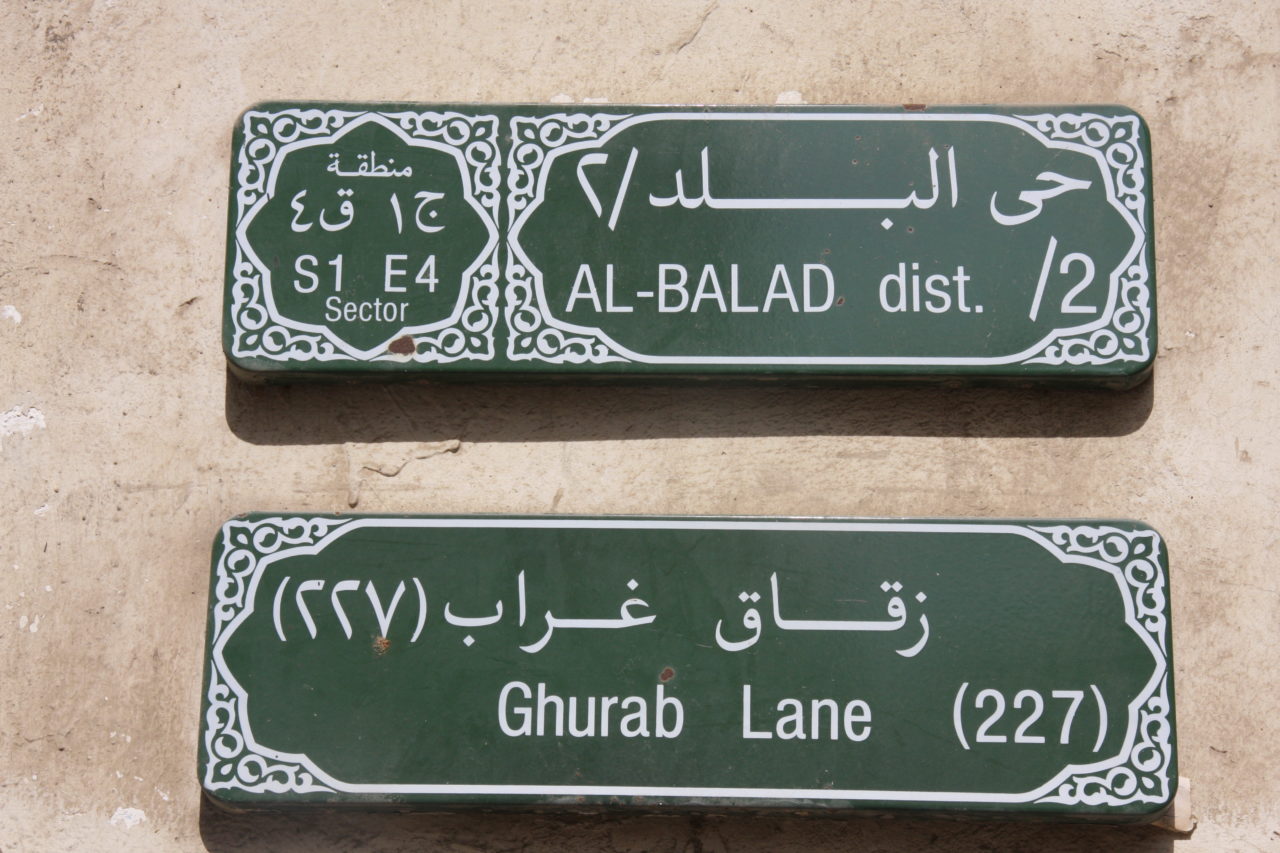


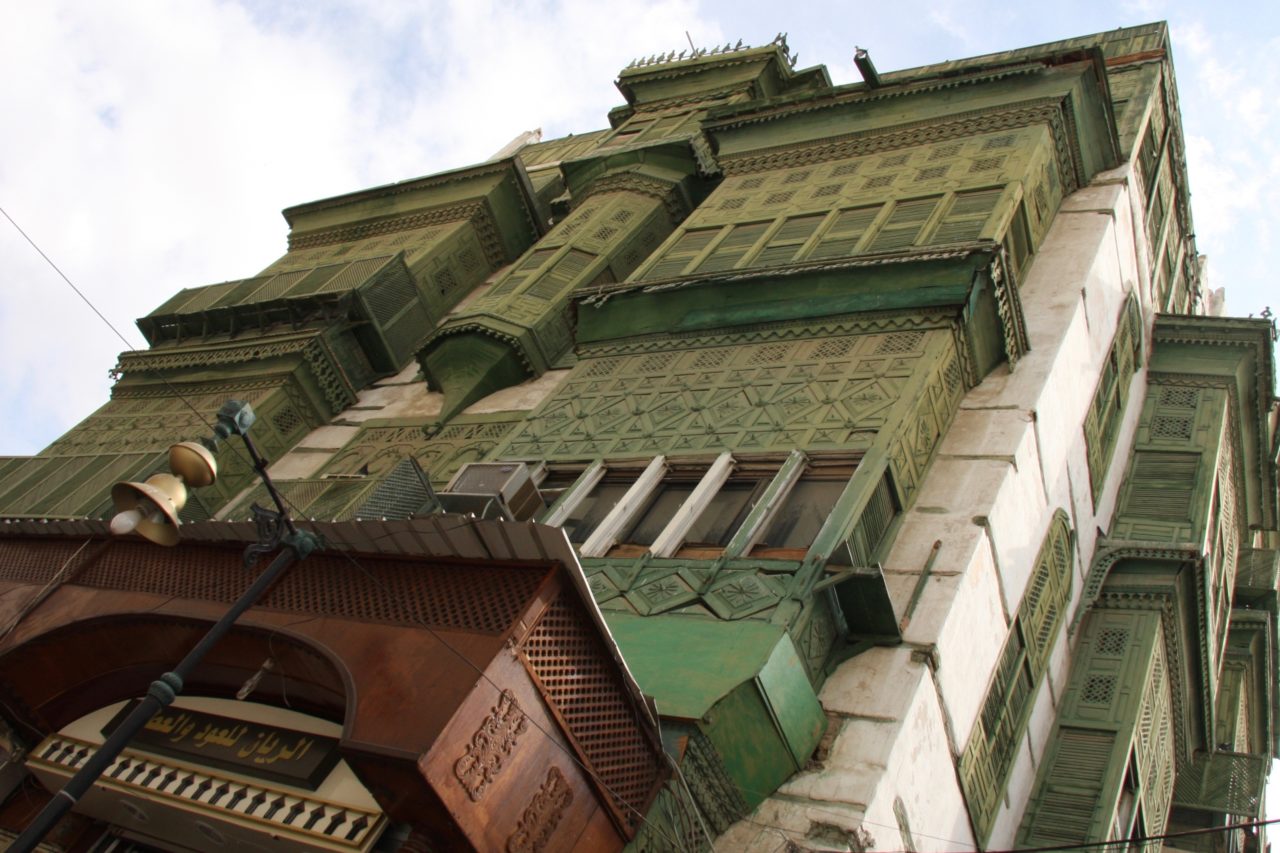



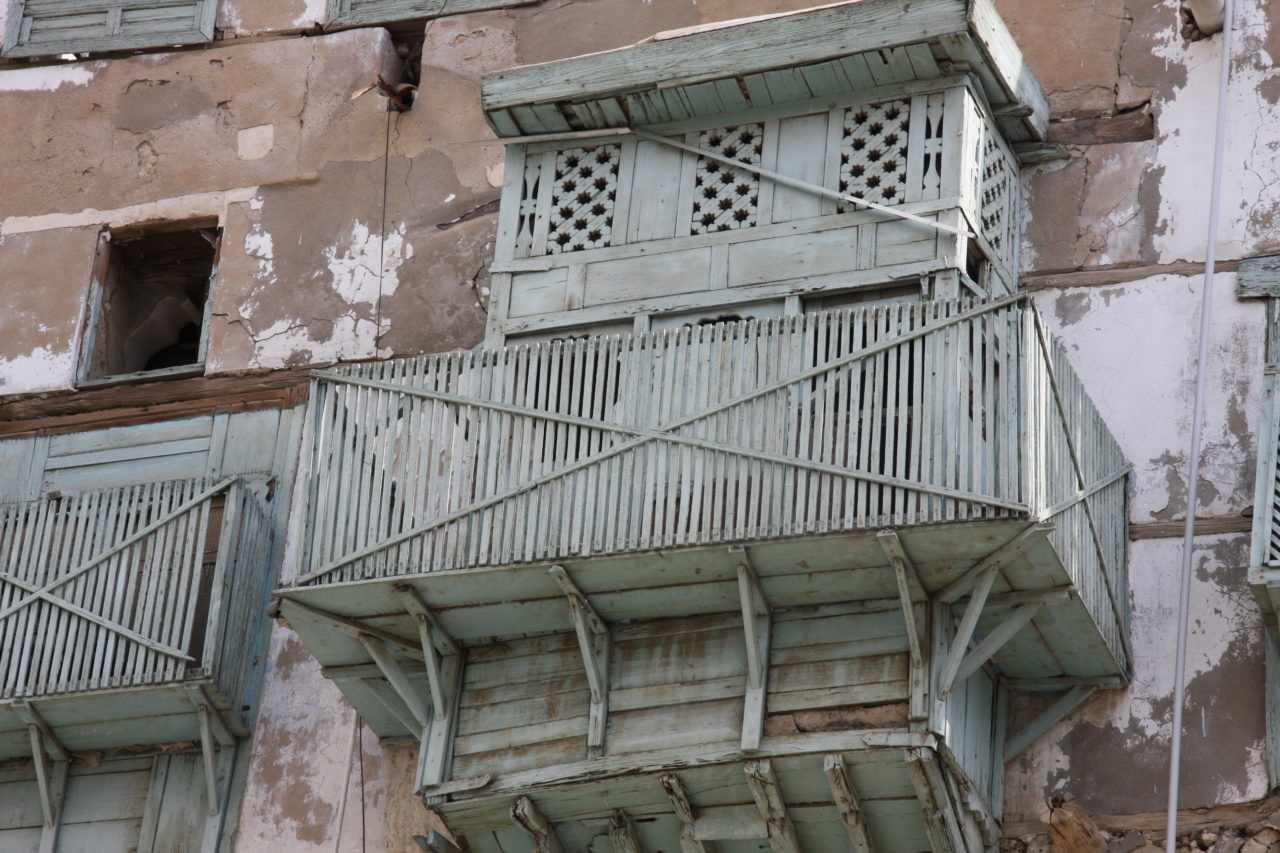

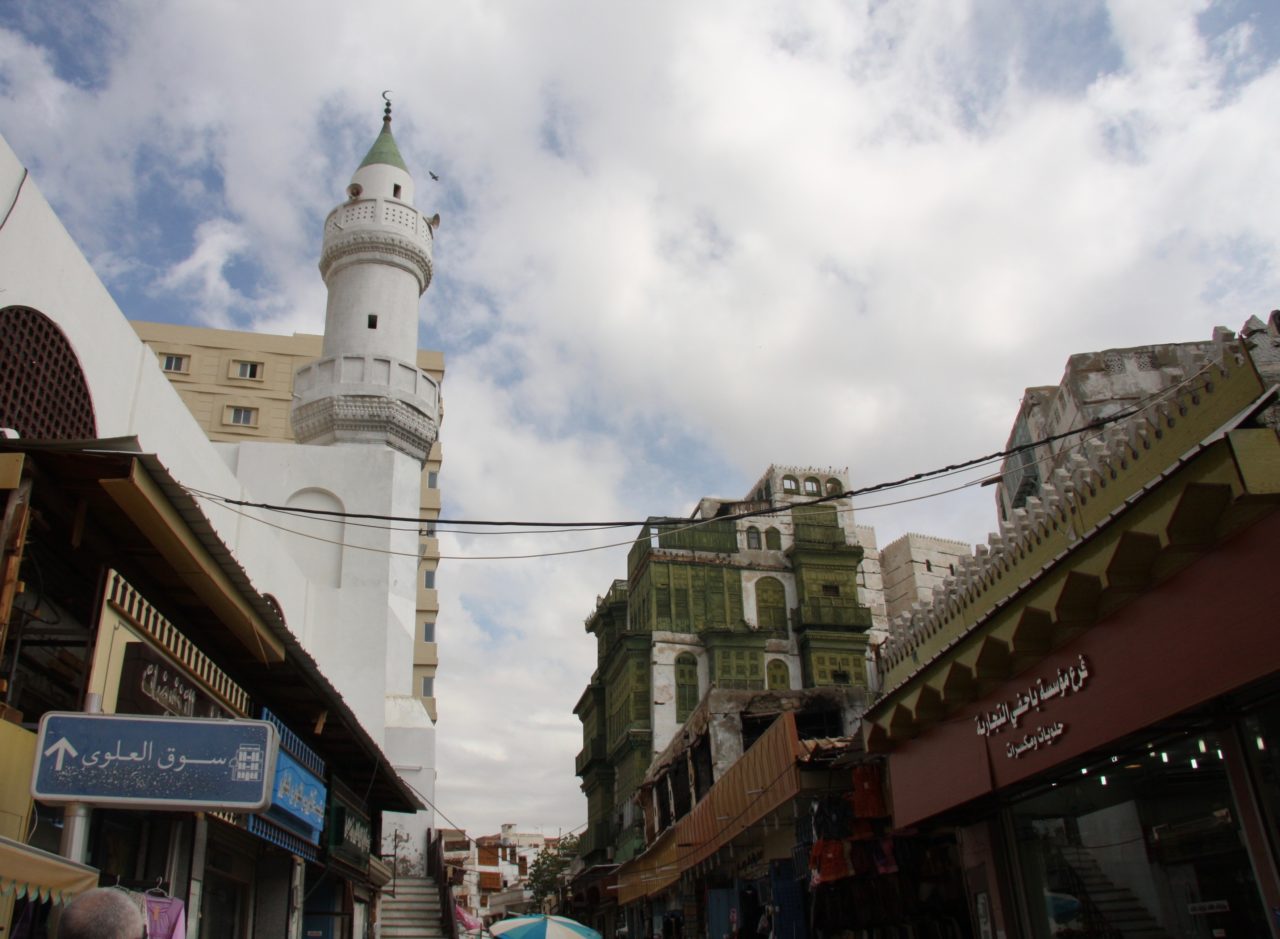
MORE INFO
 UNESCO’S HISTORIC JEDDAH report, with loads of information, documents, and photographs of buildings in Al-Balad. READ MORE
UNESCO’S HISTORIC JEDDAH report, with loads of information, documents, and photographs of buildings in Al-Balad. READ MORE
RELATED
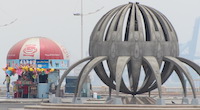 JEDDAH’S GIANT SCULPTURES: Jeddah, a port city on Saudi Arabia’s Red Sea coast, is the unlikely setting for hundreds of monumental sculptures by famous Western artists such as Joan Miró and Henry Moore… READ MORE
JEDDAH’S GIANT SCULPTURES: Jeddah, a port city on Saudi Arabia’s Red Sea coast, is the unlikely setting for hundreds of monumental sculptures by famous Western artists such as Joan Miró and Henry Moore… READ MORE
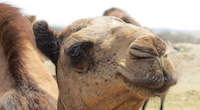 DESERT CAMEL FARM: Countries around the Arabian Gulf stage camel beauty contests with huge cash prizes – find out more in our post about visiting a camel farm in Saudi Arabia… READ MORE
DESERT CAMEL FARM: Countries around the Arabian Gulf stage camel beauty contests with huge cash prizes – find out more in our post about visiting a camel farm in Saudi Arabia… READ MORE
RECOMMENDED
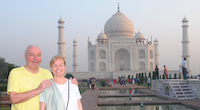 WELCOME TO OUR WORLD! Afaranwide’s home page – this is where you can find out about our latest posts and other highlights. READ MORE
WELCOME TO OUR WORLD! Afaranwide’s home page – this is where you can find out about our latest posts and other highlights. READ MORE
 TOP 10 VIRTUAL ATTRACTIONS: Many of the world’s most popular tourists sites are closed because of the coronavirus crisis, but you can still visit them virtually while you’re self-isolating. READ MORE
TOP 10 VIRTUAL ATTRACTIONS: Many of the world’s most popular tourists sites are closed because of the coronavirus crisis, but you can still visit them virtually while you’re self-isolating. READ MORE
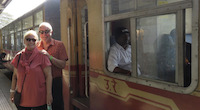 SHIMLA, QUEEN OF THE HILLS: Government officials once retreated to Shimla in the foothills of the Himalayas to escape India’s blazing hot summers. Now tourists make the same journey. READ MORE
SHIMLA, QUEEN OF THE HILLS: Government officials once retreated to Shimla in the foothills of the Himalayas to escape India’s blazing hot summers. Now tourists make the same journey. READ MORE
 TEN THINGS WE LEARNED: Our up-to-the-minute guide to creating a website, one step at a time. The costs, the mistakes – it’s what we wish we’d known when we started blogging. READ MORE
TEN THINGS WE LEARNED: Our up-to-the-minute guide to creating a website, one step at a time. The costs, the mistakes – it’s what we wish we’d known when we started blogging. READ MORE
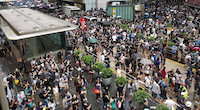 TROUBLED TIMES FOR EXPATS: Moving abroad can seem an idyllic prospect, but what happens when sudden upheavals or the inescapable realities of life intrude? READ MORE
TROUBLED TIMES FOR EXPATS: Moving abroad can seem an idyllic prospect, but what happens when sudden upheavals or the inescapable realities of life intrude? READ MORE
LET'S KEEP IN TOUCH!
Ancient Town Left
Behind in Oil Rush

SUE BRATTLE
Ruins Come Back to Life With UNESCO's Help
Al-Balad old town, Jeddah
NOW and then when you’re travelling you come across something so authentic that it takes your breath away. It may be an untouched area in nature, or a work of art, or a place that took centuries to evolve and served a purpose. That’s the case with Al-Balad in Jeddah, Saudi Arabia.
Al-Balad is what Jeddah used to look like. Meaning literally The Town, it grew up from the 7th century onwards as pilgrims to Mecca made their way to their Muslim holy site via this sea port. They all needed food and somewhere to sleep, and traders needed somewhere to sell their goods, so the two came together in Al-Balad and created a chaotic, lively, crowded area of Jeddah.
Things pretty much stayed the same for hundreds of years, with ups and downs as wealth fluctuated. One major “up” was in the mid-1800s when the Suez Canal was built and trade through Saudi boomed. Some merchants used their new money to build the more beautiful of Al-Balad’s houses. Fine latticed woodwork balconies and shuttering created “wind-catchers” and allowed the breeze to cool their rooms. The shadows they threw onto the interior walls gave some respite from the relentless sun.
Then came oil, and that was the end of a long era for Al-Balad. From the 1970s, families started moving out to modern developments elsewhere in Jeddah and squatters moved in. The fine woodwork started to rot, although the structures – some of which are made from Red Sea coral – remained intact.
That’s more or less what you see today on a visit to the area. Stretching about a kilometer long and 600 metres wide, there are 450 houses in need of repair. In 2014 they became a UNESCO World Heritage site and millions of dollars have been pledged to save the buildings. Already pockets of Al-Balad look as good as new, and there is an annual festival in the streets to celebrate its history and keep its story alive. At night, these wonderful buildings are illuminated, and some now house museums and cultural centres.
UNESCO wants to see the houses “nursed back to health” to reveal the true story of what life used to be like in the streets and alleyways of Al-Balad. We’ll never really know, and I’m not keen on over-romanticising the past. I imagine it smelt in the sweltering heat and with the streets filled with pilgrims in need of a bath. Some of them will have taken a year or more to reach their destination, unlike the millions who fly in these days.
My advice is to roam around, taking your time and perhaps stopping for coffee or water in one of the many little cafés dotted around. It’s a good place for souvenir hunting, or stocking up on spices. But mainly you’ll want to soak up the buildings. The area got a hold on me that has never let go.
Top tips: When you’re taking photographs on the streets in Saudi Arabia take care not to point your camera at women as it is considered disrespectful (and an angry male relative might tell you so). Don’t forget everything shuts at call to prayer and you’re left kicking your heels for upwards of 45 minutes.
July 2019








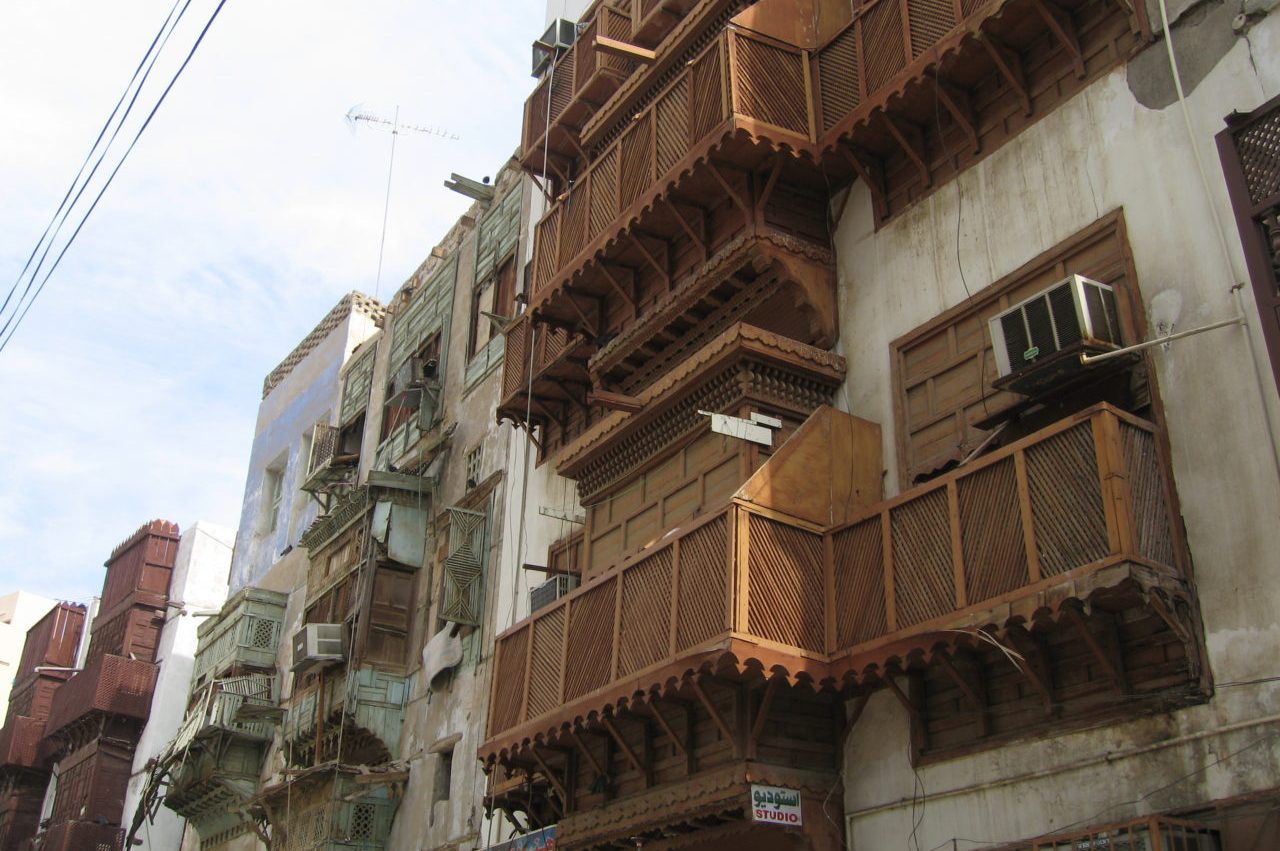

MORE INFO
 UNESCO’S HISTORIC JEDDAH report, with loads of information, documents, and photographs of buildings in Al-Balad. READ MORE
UNESCO’S HISTORIC JEDDAH report, with loads of information, documents, and photographs of buildings in Al-Balad. READ MORE
RELATED
 JEDDAH’S GIANT SCULPTURES: Jeddah, a port city on Saudi Arabia’s Red Sea coast, is the unlikely setting for hundreds of monumental sculptures by famous Western artists such as Joan Miró and Henry Moore… READ MORE
JEDDAH’S GIANT SCULPTURES: Jeddah, a port city on Saudi Arabia’s Red Sea coast, is the unlikely setting for hundreds of monumental sculptures by famous Western artists such as Joan Miró and Henry Moore… READ MORE
 DESERT CAMEL FARM: Countries around the Arabian Gulf stage camel beauty contests with huge cash prizes – find out more in our post about visiting a camel farm in Saudi Arabia… READ MORE
DESERT CAMEL FARM: Countries around the Arabian Gulf stage camel beauty contests with huge cash prizes – find out more in our post about visiting a camel farm in Saudi Arabia… READ MORE
RECOMMENDED
 WELCOME TO OUR WORLD! Afaranwide’s home page – this is where you can find out about our latest posts and other highlights. READ MORE
WELCOME TO OUR WORLD! Afaranwide’s home page – this is where you can find out about our latest posts and other highlights. READ MORE
 TOP 10 VIRTUAL ATTRACTIONS: Many of the world’s most popular tourists sites are closed because of the coronavirus crisis, but you can still visit them virtually while you’re self-isolating. READ MORE
TOP 10 VIRTUAL ATTRACTIONS: Many of the world’s most popular tourists sites are closed because of the coronavirus crisis, but you can still visit them virtually while you’re self-isolating. READ MORE
 SHIMLA, QUEEN OF THE HILLS: Government officials once retreated to Shimla in the foothills of the Himalayas to escape India’s blazing hot summers. Now tourists make the same journey. READ MORE
SHIMLA, QUEEN OF THE HILLS: Government officials once retreated to Shimla in the foothills of the Himalayas to escape India’s blazing hot summers. Now tourists make the same journey. READ MORE
 TEN THINGS WE LEARNED: Our up-to-the-minute guide to creating a website, one step at a time. The costs, the mistakes – it’s what we wish we’d known when we started blogging. READ MORE
TEN THINGS WE LEARNED: Our up-to-the-minute guide to creating a website, one step at a time. The costs, the mistakes – it’s what we wish we’d known when we started blogging. READ MORE
 TROUBLED TIMES FOR EXPATS: Moving abroad can seem an idyllic prospect, but what happens when sudden upheavals or the inescapable realities of life intrude? READ MORE
TROUBLED TIMES FOR EXPATS: Moving abroad can seem an idyllic prospect, but what happens when sudden upheavals or the inescapable realities of life intrude? READ MORE
LET'S KEEP IN TOUCH!

Ancient Town Left
Behind in Oil Rush
Ruins Come Back to Life With UNESCO's Help

SUE BRATTLE
Al-Balad old town, Jeddah
NOW and then when you’re travelling you come across something so authentic that it takes your breath away. It may be an untouched area in nature, or a work of art, or a place that took centuries to evolve and served a purpose. That’s the case with Al-Balad in Jeddah, Saudi Arabia.
Al-Balad is what Jeddah used to look like. Meaning literally The Town, it grew up from the 7th century onwards as pilgrims to Mecca made their way to their Muslim holy site via this sea port. They all needed food and somewhere to sleep, and traders needed somewhere to sell their goods, so the two came together in Al-Balad and created a chaotic, lively, crowded area of Jeddah.

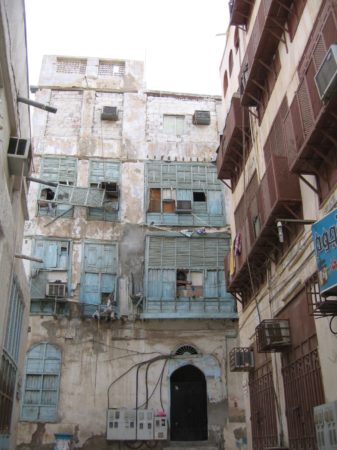
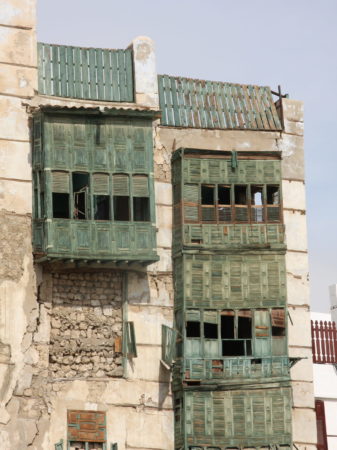
Things pretty much stayed the same for hundreds of years, with ups and downs as wealth fluctuated. One major “up” was in the mid-1800s when the Suez Canal was built and trade through Saudi boomed. Some merchants used their new money to build the more beautiful of Al-Balad’s houses. Fine latticed woodwork balconies and shuttering created “wind-catchers” and allowed the breeze to cool their rooms. The shadows they threw onto the interior walls gave some respite from the relentless sun.
Then came oil, and that was the end of a long era for Al-Balad. From the 1970s, families started moving out to modern developments elsewhere in Jeddah and squatters moved in. The fine woodwork started to rot, although the structures – some of which are made from Red Sea coral – remained intact.
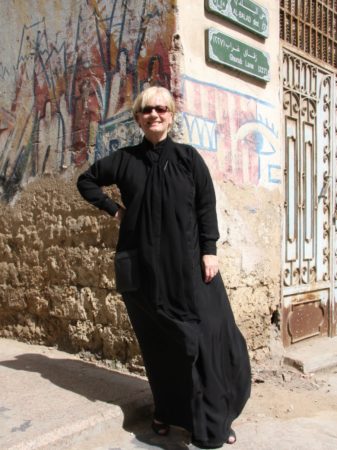
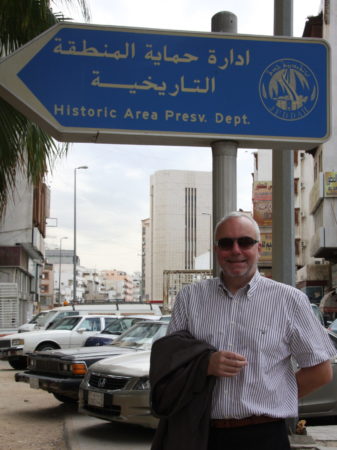
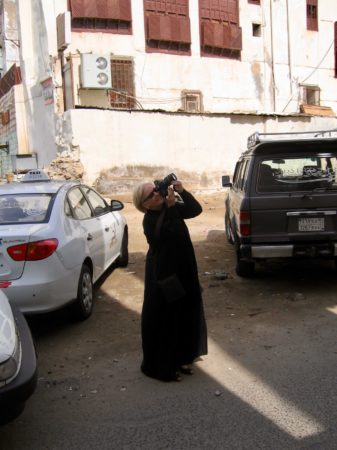
That’s more or less what you see today on a visit to the area. Stretching about a kilometer long and 600 metres wide, there are 450 houses in need of repair. In 2014 they became a UNESCO World Heritage site and millions of dollars have been pledged to save the buildings. Already pockets of Al-Balad look as good as new, and there is an annual festival in the streets to celebrate its history and keep its story alive. At night, these wonderful buildings are illuminated, and some now house museums and cultural centres.
UNESCO wants to see the houses “nursed back to health” to reveal the true story of what life used to be like in the streets and alleyways of Al-Balad. We’ll never really know, and I’m not keen on over-romanticising the past. I imagine it smelt in the sweltering heat and with the streets filled with pilgrims in need of a bath. Some of them will have taken a year or more to reach their destination, unlike the millions who fly in these days.
My advice is to roam around, taking your time and perhaps stopping for coffee or water in one of the many little cafés dotted around. It’s a good place for souvenir hunting, or stocking up on spices. But mainly you’ll want to soak up the buildings. The area got a hold on me that has never let go.

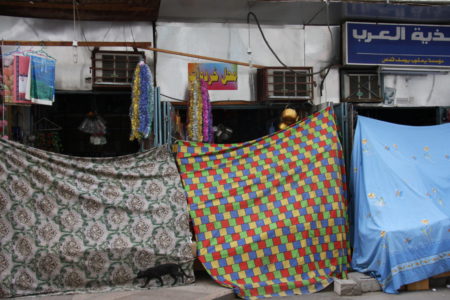
Top tips: When you’re taking photographs on the streets in Saudi Arabia take care not to point your camera at women as it is considered disrespectful (and an angry male relative might tell you so). Don’t forget everything shuts at call to prayer and you’re left kicking your heels for upwards of 45 minutes.
July 2019










MORE INFO
 UNESCO’S HISTORIC JEDDAH report, with loads of information, documents, and photographs of buildings in Al-Balad. READ MORE
UNESCO’S HISTORIC JEDDAH report, with loads of information, documents, and photographs of buildings in Al-Balad. READ MORE
RELATED
 JEDDAH’S GIANT SCULPTURES: Jeddah, a port city on Saudi Arabia’s Red Sea coast, is the unlikely setting for hundreds of monumental sculptures by famous Western artists such as Joan Miró and Henry Moore… READ MORE
JEDDAH’S GIANT SCULPTURES: Jeddah, a port city on Saudi Arabia’s Red Sea coast, is the unlikely setting for hundreds of monumental sculptures by famous Western artists such as Joan Miró and Henry Moore… READ MORE
 DESERT CAMEL FARM: Countries around the Arabian Gulf stage camel beauty contests with huge cash prizes – find out more in our post about visiting a camel farm in Saudi Arabia… READ MORE
DESERT CAMEL FARM: Countries around the Arabian Gulf stage camel beauty contests with huge cash prizes – find out more in our post about visiting a camel farm in Saudi Arabia… READ MORE
RECOMMENDED
 WELCOME TO OUR WORLD! Afaranwide’s home page – this is where you can find out about our latest posts and other highlights. READ MORE
WELCOME TO OUR WORLD! Afaranwide’s home page – this is where you can find out about our latest posts and other highlights. READ MORE
 TOP 10 VIRTUAL ATTRACTIONS: Many of the world’s most popular tourists sites are closed because of the coronavirus crisis, but you can still visit them virtually while you’re self-isolating. READ MORE
TOP 10 VIRTUAL ATTRACTIONS: Many of the world’s most popular tourists sites are closed because of the coronavirus crisis, but you can still visit them virtually while you’re self-isolating. READ MORE
 SHIMLA, QUEEN OF THE HILLS: Government officials once retreated to Shimla in the foothills of the Himalayas to escape India’s blazing hot summers. Now tourists make the same journey. READ MORE
SHIMLA, QUEEN OF THE HILLS: Government officials once retreated to Shimla in the foothills of the Himalayas to escape India’s blazing hot summers. Now tourists make the same journey. READ MORE
 TEN THINGS WE LEARNED: Our up-to-the-minute guide to creating a website, one step at a time. The costs, the mistakes – it’s what we wish we’d known when we started blogging. READ MORE
TEN THINGS WE LEARNED: Our up-to-the-minute guide to creating a website, one step at a time. The costs, the mistakes – it’s what we wish we’d known when we started blogging. READ MORE
 TROUBLED TIMES FOR EXPATS: Moving abroad can seem an idyllic prospect, but what happens when sudden upheavals or the inescapable realities of life intrude? READ MORE
TROUBLED TIMES FOR EXPATS: Moving abroad can seem an idyllic prospect, but what happens when sudden upheavals or the inescapable realities of life intrude? READ MORE

